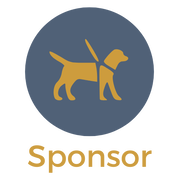-
ADOPTION
- Get Involved
- DONATE
- ABOUT US
-
RESOURCES
-
Resources for Dog Owners
>
- Training Reimbursement Program
- Special Offer: Dog Training Over Video Chat
- The First 24 Hours with Your Rescue Dog
- You Adopted a Dog. Now What?
- The Secret to Success: The Two Week Shutdown
- Introducing Dogs to Each Other
- How to Introduce a Dog to a Cat
- Children and Dogs
- Things to do with Your Dog
- Teaching Appropriate Behavior
- Houstraining Your New Puppy
- The Benefits of Crate Training
- Resources for Cat Owners >
- ReHoming a Pet >
- Lost and Found Pet Resources
-
Resources for Dog Owners
>
- Store
- Forms & Docs
-
FOSTER & VOLUNTEER RESOURCES
Daily Interaction is Important.
If you want a well-trained, well-mannered, well-socialized dog, interact multiple times
every day with your dog, with the goal of building a foundation of trust and a healthy
relationship.
All dogs benefit from learning and practicing skills daily. Keep all interaction fun; if you
are stressed on a particular day and will not play nicely with your dog, skip spending
time with your dog that day. Dogs are sensitive to your emotional state and will pick up
on your stress.
If you want a well-trained, well-mannered, well-socialized dog, interact multiple times
every day with your dog, with the goal of building a foundation of trust and a healthy
relationship.
All dogs benefit from learning and practicing skills daily. Keep all interaction fun; if you
are stressed on a particular day and will not play nicely with your dog, skip spending
time with your dog that day. Dogs are sensitive to your emotional state and will pick up
on your stress.
-
House-training
-
Name recognition
-
Recall
-
Joy of touch
-
Rest & relaxation
-
Retrieve
-
Tug
<
>
Add the words “Go potty” right away. To help set each dog up for success, walk him or her outside about every 45 minutes on lead to allow the dog many opportunities to get it right. Always supervise the dog inside the house because it’s much easier and faster to help her learn where to go potty before she starts having “accidents” in the house.
Use the dog’s name often when you’re praising and playing with her, and always with a happy tone. Dogs should have only positive associations with their names and nicknames.
Call the dog to you often; again, always using a happy tone. Add treats sometimes to pleasantly surprise her and keep her coming to you fast. Remember to practice recall frequently, not just when something fun is about to end. People often lose great recall because they only call the dog for negative reasons or use a negative tone. Why would any dog want to come running to you if you seem angry or if the fun at most always ends when she runs to you?
Teach your dog to enjoy being touched on all body parts. Start with getting your dog to enjoy your touch and work toward the goal of getting him comfortable with being touched by people he doesn’t know. It is important that dogs allow us to touch them because they may need to be handled by various people: strangers, rescuers after an emergency, the vet, the groomer. They may need to be picked up off the ground or floor for grooming or medical reasons. If you can lift the dog’s body up off the floor, practice this to help him relax and realize that nothing bad happens when he is lifted.
Can you trim your dog’s nails? Is he comfortable having his feet touched? Grooming has many benefits for dogs, so teach your dog to enjoy grooming. Make sure that anyone who grooms your dog is kind and gentle to help ensure that you have a dog that is safe for others to handle. You can help him to feel more relaxed by adding positive experiences to their grooming memories.
When you have a new dog in the home, try massaging the dog every day, touching his entire body and continuing to touch him until he relaxes. Many dogs are so excited and reactive to our touch that this is a challenge. To help the dog learn to relax and enjoy touch, do the massage in a quiet room without a lot of human or non- human traffic.
Can you trim your dog’s nails? Is he comfortable having his feet touched? Grooming has many benefits for dogs, so teach your dog to enjoy grooming. Make sure that anyone who grooms your dog is kind and gentle to help ensure that you have a dog that is safe for others to handle. You can help him to feel more relaxed by adding positive experiences to their grooming memories.
When you have a new dog in the home, try massaging the dog every day, touching his entire body and continuing to touch him until he relaxes. Many dogs are so excited and reactive to our touch that this is a challenge. To help the dog learn to relax and enjoy touch, do the massage in a quiet room without a lot of human or non- human traffic.
Dogs don’t know how to control their own energy and the result can be destructive, There are dogs that bark incessantly, chew up everything within reach, dogs who mount, pull humans around, knock down children, and decapitate Barbie! You must teach your dog to have an “off” switch. Many dogs are dropped off at shelters because their people became frustrated and felt they could no longer control their dogs.
You can help your dog by teaching her how to rest and relax in your home and during outings. Going on walks or riding in a vehicle should be relaxing for you both. Practice daily by having the dog either tethered to you or crated for a while.
They also enjoy walking on lead without pulling. How? Because they are taught to walk without pulling: simply stop walking until they ease up on pulling. Going for walks is much more enjoyable if the dog isn’t yanking you along. Also, any dog will be more welcome in public settings if she has manners. Her energy will be more focused and calmer if she is not in emotional overdrive while out walking.
You can help your dog by teaching her how to rest and relax in your home and during outings. Going on walks or riding in a vehicle should be relaxing for you both. Practice daily by having the dog either tethered to you or crated for a while.
They also enjoy walking on lead without pulling. How? Because they are taught to walk without pulling: simply stop walking until they ease up on pulling. Going for walks is much more enjoyable if the dog isn’t yanking you along. Also, any dog will be more welcome in public settings if she has manners. Her energy will be more focused and calmer if she is not in emotional overdrive while out walking.
The retrieving game is not for every dog; those who enjoy it will let you know. Start with a toy tied on a lunge whip. Drag the toy around excitedly and the dog will probably chase it. If he does, this can be the game for a while. Then start throwing one toy tied with a thin line a short distance and have another toy in your hand. If the dog goes to the thrown toy, guide her back with the line and show her that you have another toy.
The two-toy method helps many dogs learn to interact instead of just taking a toy and going off to play with it. The dog also learns to trade the toy in his mouth for the toy you have, which is more fun because you can keep that toy moving to entice him to continue to play with you. Add words for trading toys; “trade,” “drop it” or “give” are common.
The two-toy method helps many dogs learn to interact instead of just taking a toy and going off to play with it. The dog also learns to trade the toy in his mouth for the toy you have, which is more fun because you can keep that toy moving to entice him to continue to play with you. Add words for trading toys; “trade,” “drop it” or “give” are common.
The game of tug with rules, is a very healthy, educational game. You start and end the game, and if the dog ever puts her teeth on your skin, the game is over. Use an emotional tone to say “Ouch!” if you feel teeth. This helps dogs learn to play within limits. Self-limiting behavior is normal for dogs: Watch well-socialized adult dogs play with puppies or senior dogs. They sense what is appropriate and play accordingly. Again, you can use two toys to help the dog learn to drop the one she is holding, signaling the end of one game and the start of another.
A significant portion of the Resources sections of this website, and content therein, are reproduced from Best Friends (www.bestfriends.org). Specific authors are noted where appropriate. Resources utilized from the Best Friends website are available for use and reproduction without prior contact. Much of this content is protected by copyright, trademark, and other intellectual property laws.
Please Help Fund Our Lifesaving Mission.
[email protected] | 612-299-2001
3500 Vicksburg Lane N., #220, Plymouth, MN 55447-1334
(mailing address only)
3500 Vicksburg Lane N., #220, Plymouth, MN 55447-1334
(mailing address only)
© The Rescue Crew. All rights reserved.
-
ADOPTION
- Get Involved
- DONATE
- ABOUT US
-
RESOURCES
-
Resources for Dog Owners
>
- Training Reimbursement Program
- Special Offer: Dog Training Over Video Chat
- The First 24 Hours with Your Rescue Dog
- You Adopted a Dog. Now What?
- The Secret to Success: The Two Week Shutdown
- Introducing Dogs to Each Other
- How to Introduce a Dog to a Cat
- Children and Dogs
- Things to do with Your Dog
- Teaching Appropriate Behavior
- Houstraining Your New Puppy
- The Benefits of Crate Training
- Resources for Cat Owners >
- ReHoming a Pet >
- Lost and Found Pet Resources
-
Resources for Dog Owners
>
- Store
- Forms & Docs
-
FOSTER & VOLUNTEER RESOURCES




